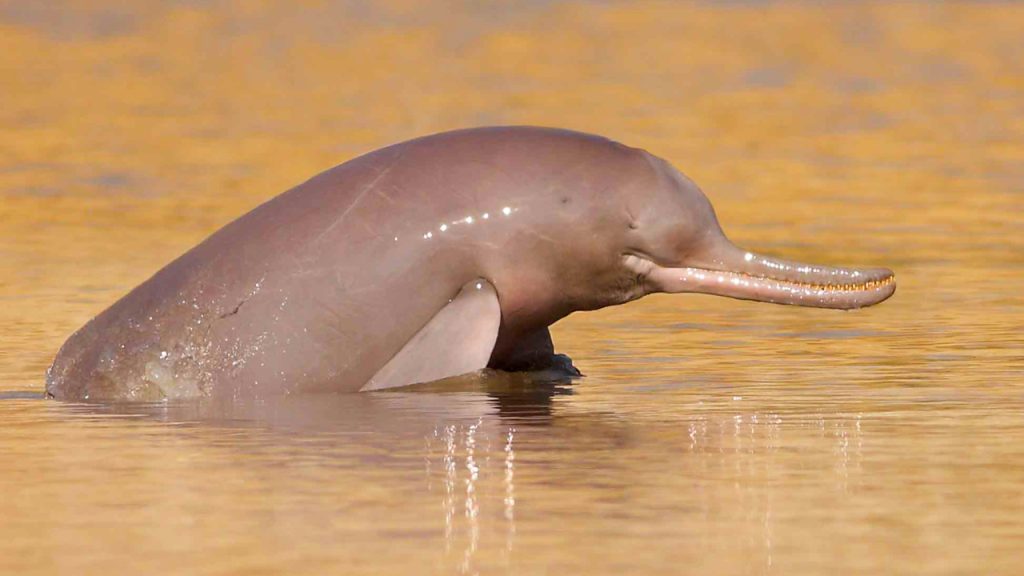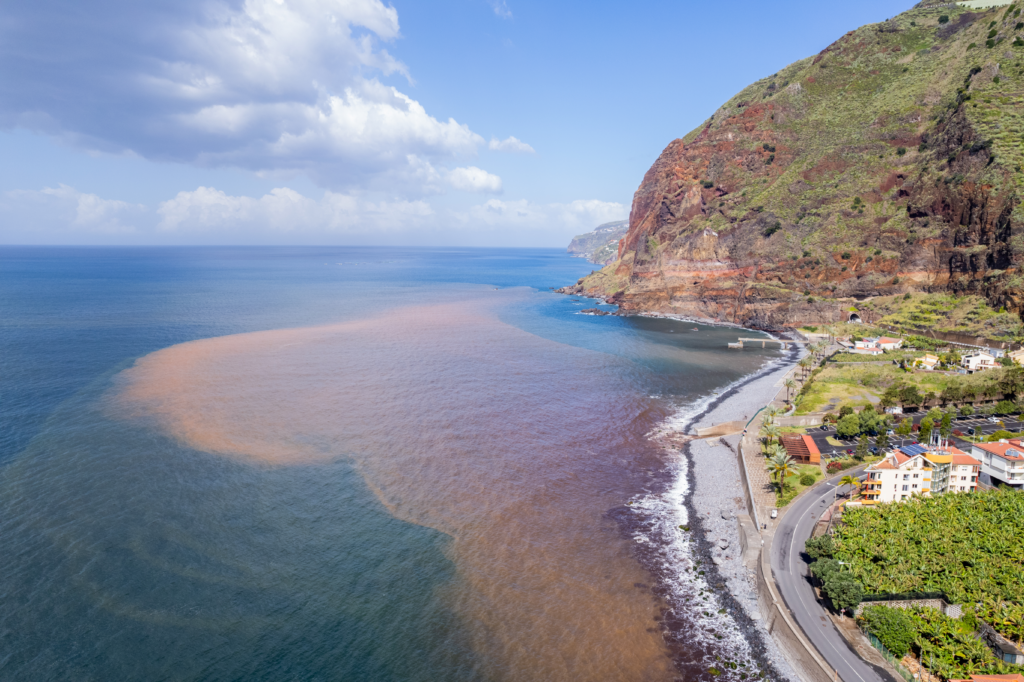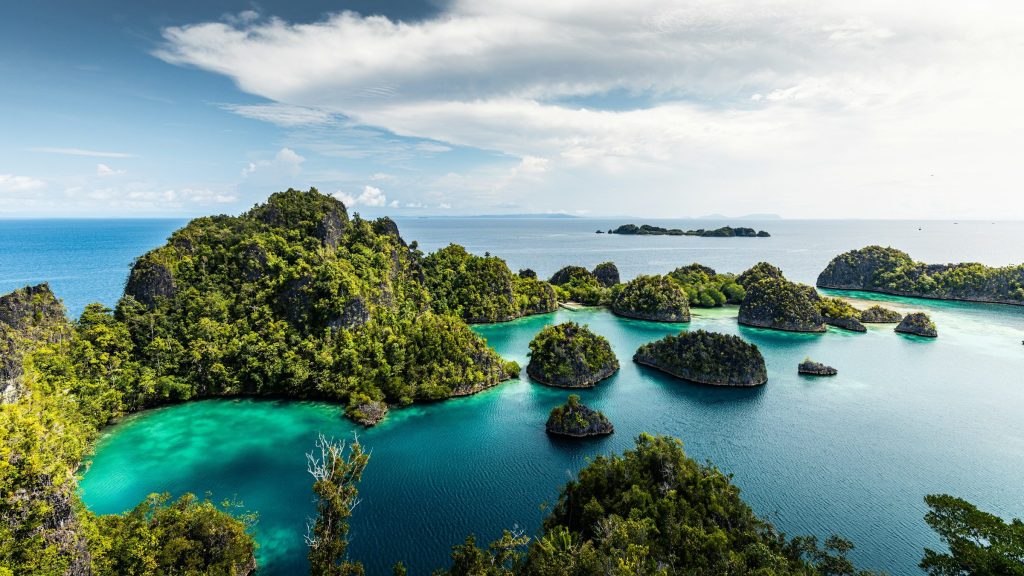Great Ocean Journeys – Understanding Migration in the Deep Blue
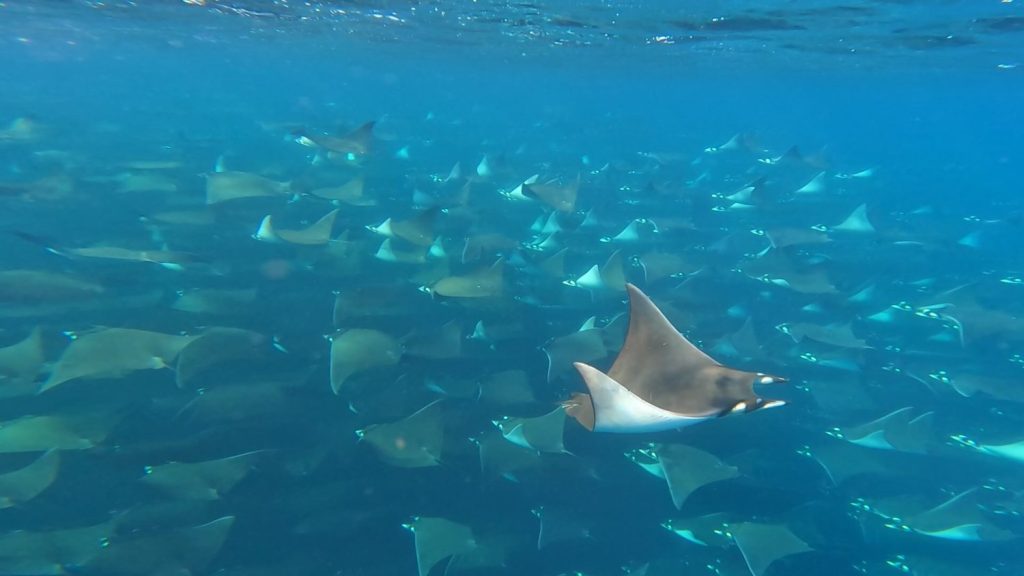
The ocean, vast and mysterious, is not just a static expanse of water. It’s a dynamic ecosystem teeming with life, movement, and migrations that rival those on land. From tiny plankton to mighty whales, countless creatures embark on epic journeys across the ocean, driven by instinct, necessity, and the eternal rhythm of nature. In this article, we take a brief glimpse into the fascinating world of oceanic migration—exploring why it’s done, who undertakes these incredible journeys, and the when and where of these awe-inspiring migrations.
Why Migration in the Ocean?
Migration in the ocean serves a multitude of purposes, each vital to the survival and reproductive success of countless marine species. One primary reason for migration is the search for food. Just like their terrestrial counterparts, many marine animals travel great distances in search of abundant feeding grounds. For example, schools of fish such as tuna and salmon undertake long migrations from their spawning grounds to nutrient-rich feeding areas, where they can feast on plankton and smaller fish.
Another crucial factor driving oceanic migration is reproduction. Many marine species, including sea turtles and certain species of fish, return to specific breeding grounds year after year to mate and lay their eggs. These breeding grounds, often located in warm tropical waters, provide the ideal conditions for successful reproduction and the survival of offspring.
Additionally, migration in the ocean can be influenced by environmental factors such as temperature, currents, and seasonal changes. Some species migrate to avoid unfavourable conditions, such as cold water or low food availability, while others take advantage of seasonal fluctuations to maximise their chances of survival and reproductive success.
Who Undertakes Oceanic Migrations?
The cast of characters involved in oceanic migrations is as diverse as the ocean itself. From the tiniest zooplankton to the largest whales, virtually every corner of the ocean is inhabited by migratory species. Among the most iconic migrators are marine mammals such as whales, dolphins, and seals. These highly intelligent creatures undertake some of the longest and most impressive migrations in the animal kingdom.
For example, the humpback whale is known for its annual migration between feeding grounds in colder polar waters and breeding grounds in warmer tropical waters. This journey can span thousands of miles and is essential for the survival of the species. Similarly, many species of sea turtles, including the loggerhead and leatherback, undertake epic migrations across oceans to return to the beaches where they were born to lay their eggs.
But it’s not just the larger marine mammals and reptiles that migrate. Countless species of fish, birds, and invertebrates also undertake migratory journeys across the ocean. From the tiny silver-sided eel to the majestic albatross, migratory species come in all shapes and sizes, each playing a vital role in the intricate web of life that spans the world’s oceans.
When and Where do Oceanic Migrations Occur?
Oceanic migrations occur year-round, driven by a complex interplay of factors such as seasonal changes, food availability, and reproductive cycles. In some cases, migrations are tied to specific times of the year, such as the annual spawning runs of salmon and other fish species. These migrations often coincide with environmental cues such as changes in water temperature and day length.
The timing and routes of oceanic migrations can vary widely depending on the species involved and the specific environmental conditions they encounter along the way. For example, some migratory species, such as certain species of sharks and tuna, follow well-defined migration routes known as migratory corridors. These corridors may span vast distances and can cross entire ocean basins, connecting breeding and feeding grounds across different regions.
Other migratory species, such as sea turtles and marine birds, may follow more flexible migration patterns, influenced by factors such as wind patterns, ocean currents, and the location of food sources. For example, many seabirds undertake transoceanic migrations, traveling thousands of miles between breeding colonies and foraging areas in search of prey.
Some of the most iconic oceanic migrations and when and where you can see them:
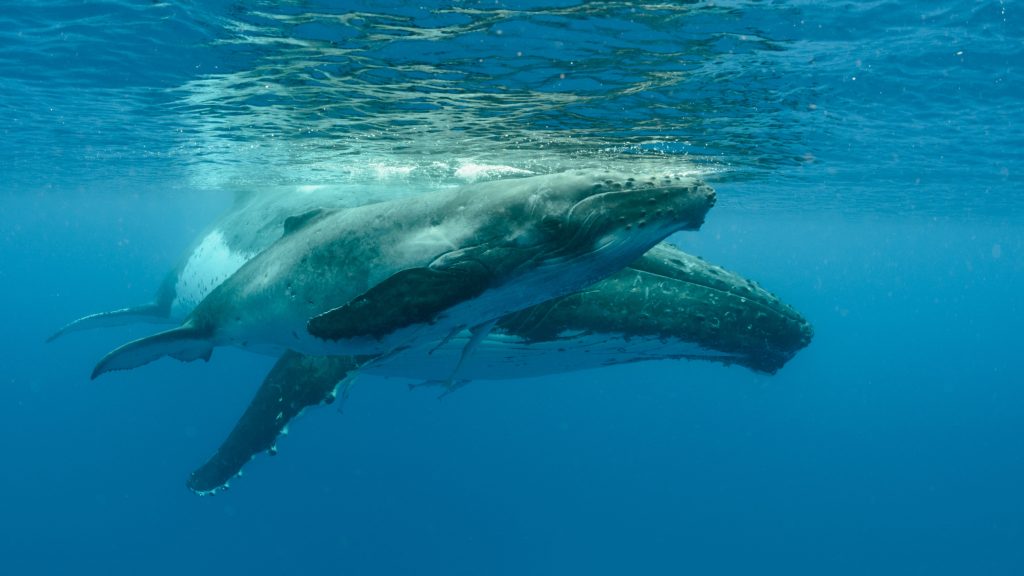
Humpback Whale Migration – Humpback whales undertake one of the most iconic migrations, traveling from their feeding grounds in polar regions (e.g., Antarctica, Alaska) to warmer breeding grounds in tropical or subtropical waters (e.g., Hawaii, Mexico and Southern Africa). They typically migrate during the winter months, with their journey spanning thousands of miles.
Routes & Timing – Various destinations around the world offer opportunities to witness humpback whale migrations, including Hawaii, Mexico (e.g., Baja California), Alaska, and Australia (e.g., Great Barrier Reef)l The timing of humpback whale migrations varies depending on the location, but generally occurs during the winter months in each hemisphere
Leatherback Sea Turtle Migration – Leatherback sea turtles embark on an incredible transoceanic migration, moving from nesting beaches in tropical regions (e.g., Indonesia, Costa Rica) to feeding grounds in colder waters (e.g., North Atlantic, South Africa). During a nesting season, they nest multiple times, typically at intervals of 8 to 12 days, laying clutches of around 100 eggs each. The eggs incubate for approximately two months before the hatchlings emerge. Female leatherbacks return to nest every 2 to 4 years.
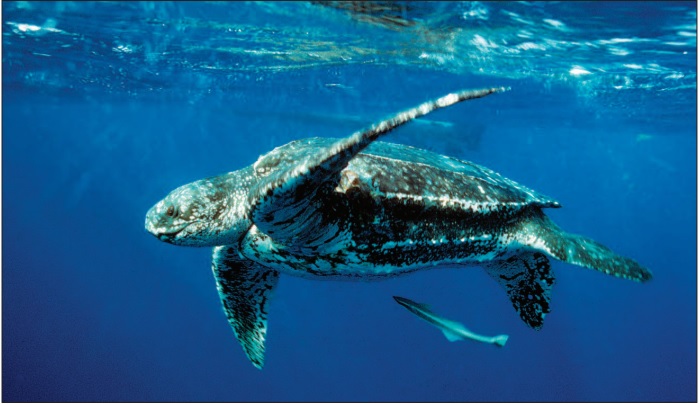
Routes & Timing – Turtles nesting in summer (July through September) migrate to tropical and temperate regions in the northern hemisphere. Turtles nesting in winter (November through February) migrate to tropical waters and temperate regions in the southern hemisphere.
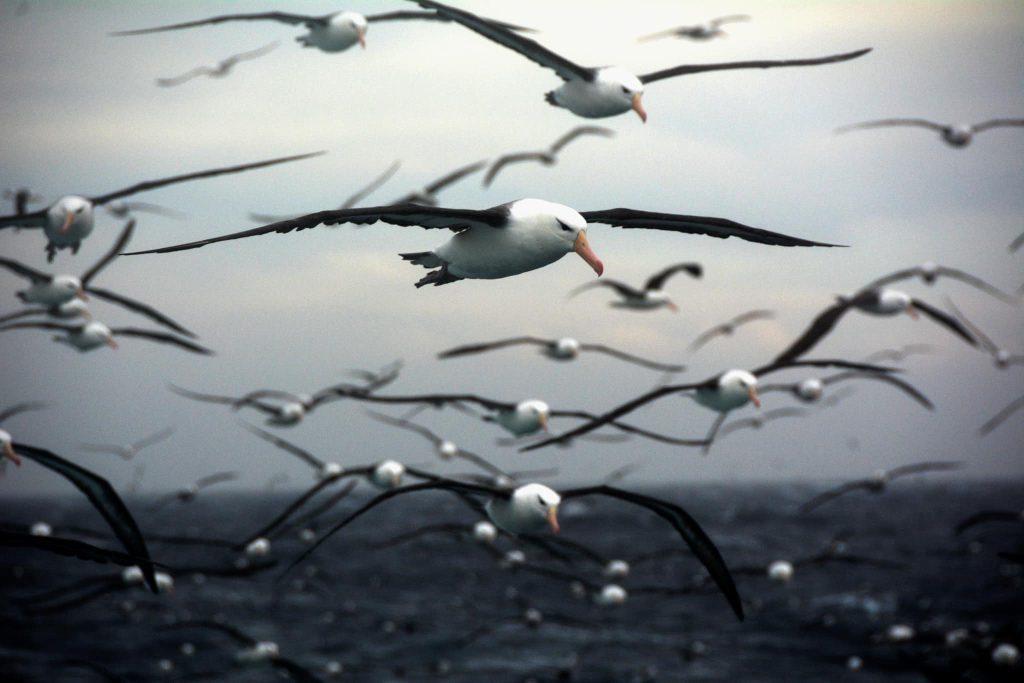
Albatross Migration: Albatrosses are known for their transoceanic migrations, travelling between breeding colonies on remote islands (e.g., South Georgia, Midway Atoll) and foraging grounds in both northern and southern oceans. Wandering albatrosses typically breed every two years. During their off year, some birds migrate to the Pacific Ocean, while others remain sedentary. Those migrating use westerly winds, resulting in detours of 10,000 km and circumnavigating Antarctica 2 to 3 times, covering over 120,000 km in a year.
Routes & Timing – Albatross colonies can be found on remote islands such as South Georgia (in the Southern Ocean) and Midway Atoll (in the North Pacific). Visits to albatross colonies may be limited due to their remote locations and conservation concerns. However, some guided tours and expeditions offer opportunities to observe these seabirds in their natural habitat.
Bluefin Tuna Migration: Bluefin tuna undertake extensive migrations across the Atlantic and Pacific oceans, moving between spawning grounds in warm waters (e.g., Mediterranean Sea, Gulf of Mexico) and feeding grounds in cooler regions (e.g., North Atlantic, Pacific Northwest). Female Bluefins have the remarkable capacity to produce up to 30 million eggs.
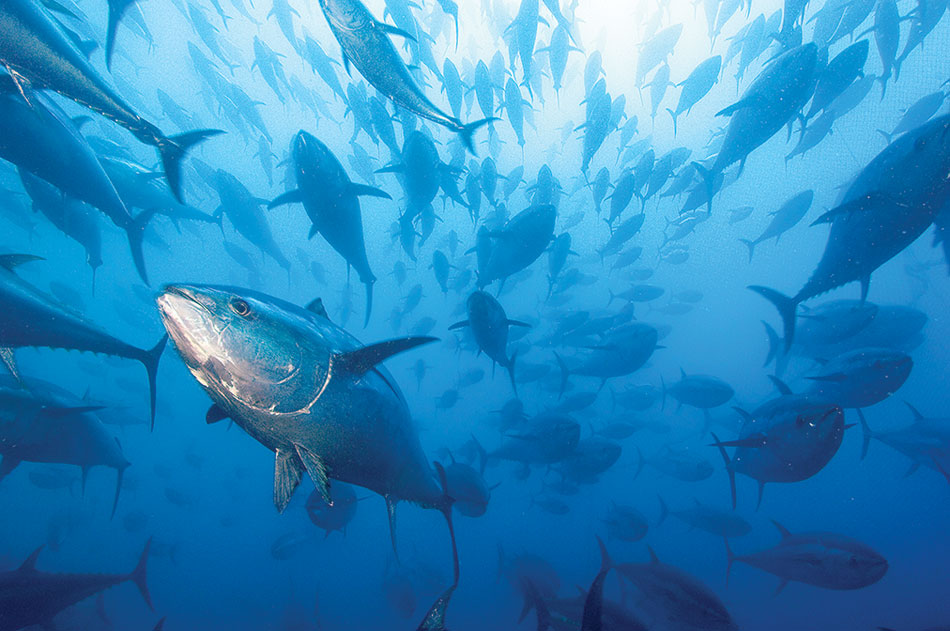
Routes & Timing – Bluefin tuna migrate across all oceans during the whole year to spawn and to find food.

Mobula Ray Migration: Mobula rays, also known as “flying rays,” undertake an impressive migration to breed and feed in the Gulf of Baja California, Mexico, in schools of thousands. When gathering, during the spring and summer months, those massive aggregations of mobulas rays display spectacular acrobatic behaviours, with rays leaping out of the water.
Routes & Timing – The mobula ray migration occurs in the Gulf of Baja California (also known as the Sea of Cortez) off the coast of Mexico. The peak season for observing the mobula ray migration is typically during the spring months, from March to May, particularly near the town of La Paz, and during the summer months, June to August, near the city of Cabo San Lucas
Sardine Run: The sardine run is a spectacular marine event that occurs along the eastern coast of South Africa. Massive shoals of sardines migrate northwards along the coastline, attracting predators such as dolphins, sharks, and seabirds. This migration typically occurs during the winter months, drawing tourists and wildlife enthusiasts from around the world.

Routes & Timing – The sardine run occurs along the eastern coast of South Africa, particularly in the region between Port St. Johns and Durban. The sardine run typically takes place during the winter months in the Southern Hemisphere, usually between May and July.
While opportunities to witness these migrations may vary depending on factors such as timing, location, and conservation regulations, guided wildlife tours and expeditions are often available to provide visitors with the chance to experience these natural wonders up close. Additionally, marine conservation organisations and research institutions may offer educational programs and opportunities for citizen scientists to participate in monitoring and research efforts related to these migrations.
These iconic ocean migrations showcase the incredible diversity and adaptability of marine life, as well as the importance of oceanic ecosystems in supporting these remarkable journeys.
Oceanic migration is a fascinating and essential aspect of life in the world’s oceans. From the smallest plankton to the largest whales, migratory species play a vital role in shaping marine ecosystems and maintaining the delicate balance of life beneath the waves. By understanding why migration occurs, who undertakes these incredible journeys, and the when and where of oceanic migrations, we gain valuable insights into the complex and interconnected web of life that spans our planet’s oceans. So the next time you gaze out at the vast expanse of the sea, take a moment to appreciate the countless creatures that call it home—and the remarkable journeys they undertake in their never-ending quest for survival and reproduction.

